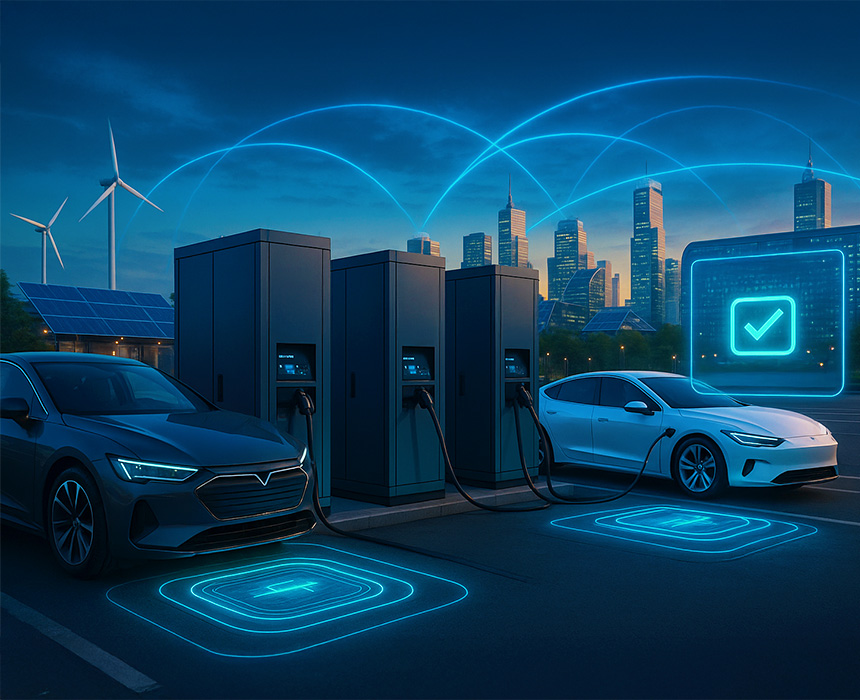Next-Gen Technologies and Standards in EV Charging
EV charging is evolving across batteries, power electronics, communication protocols, and smart-grid integration. High-power DC, emerging wireless solutions, and software-defined stacks are reshaping user experience and operational efficiency simultaneously.
Batteries and Charging Chemistry
NMC and LFP chemistries balance cost, energy density, and safety. As solid-state research advances, fast charging hinges on anode plating control, thermal management, and SEI stability. Embedded sensors and model-based BMS open wider yet safer fast-charge windows.
Power Electronics and High-Power DC
SiC MOSFETs and GaN devices boost converter efficiency and shrink footprints. Modular racks, parallel topologies, and liquid cooling deliver stable 350 kW+ output; harmonic filtering and PFC improve grid conformity.
Protocols and Interoperability
Open standards reduce vendor lock-in. OCPP enables cloud-to-charger management, while ISO 15118 Plug&Charge authenticates via the vehicle securely. Open APIs support roaming and multi-operator scenarios.
Smart Grid, V2G, and Flexibility
Demand response shifts load away from peaks and enables flexibility markets. V2G turns EVs into distributed storage; price signals and carbon-intensity metrics steer tariffs. Lifetime-aware limiters protect battery health while optimizing total cost.
Wireless and Automated Charging
Static inductive pads cut cable handling for fleets; on-route dynamic charging trials need alignment accuracy, efficiency, and standardization. Robotic connectors and automated parking interfaces bridge toward autonomous mobility.
Cybersecurity and Reliability
As the attack surface grows, certificate management, key rotation, and end-to-end encryption become essential. Anomaly detection, secure firmware updates, and audit trails preserve uptime. Regulatory alignment spans DOE, FERC, NIST, SAE and, locally, EPDK, GİB, TSE.
Standards and Regulatory Landscape
IEC/ISO interfaces and test methods align with grid codes and market rules. O’zbekenergo and O’zDSt guide Central Asia specifics; Russia’s Минэнерго and ГОСТ define conformity and safety envelopes.
Sustainability and Lifecycle
Lifecycle design emphasizes modularity, repairability, and spares. Coupling renewables with storage lowers location-based emissions; battery recycling advances a circular materials economy.
Conclusion
Technology in EV charging is converging into integrated, data-driven, secure, and interoperable systems. The result is better user experience, stronger grid resilience, and accelerated sustainability.




